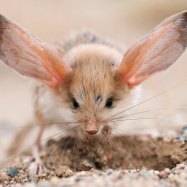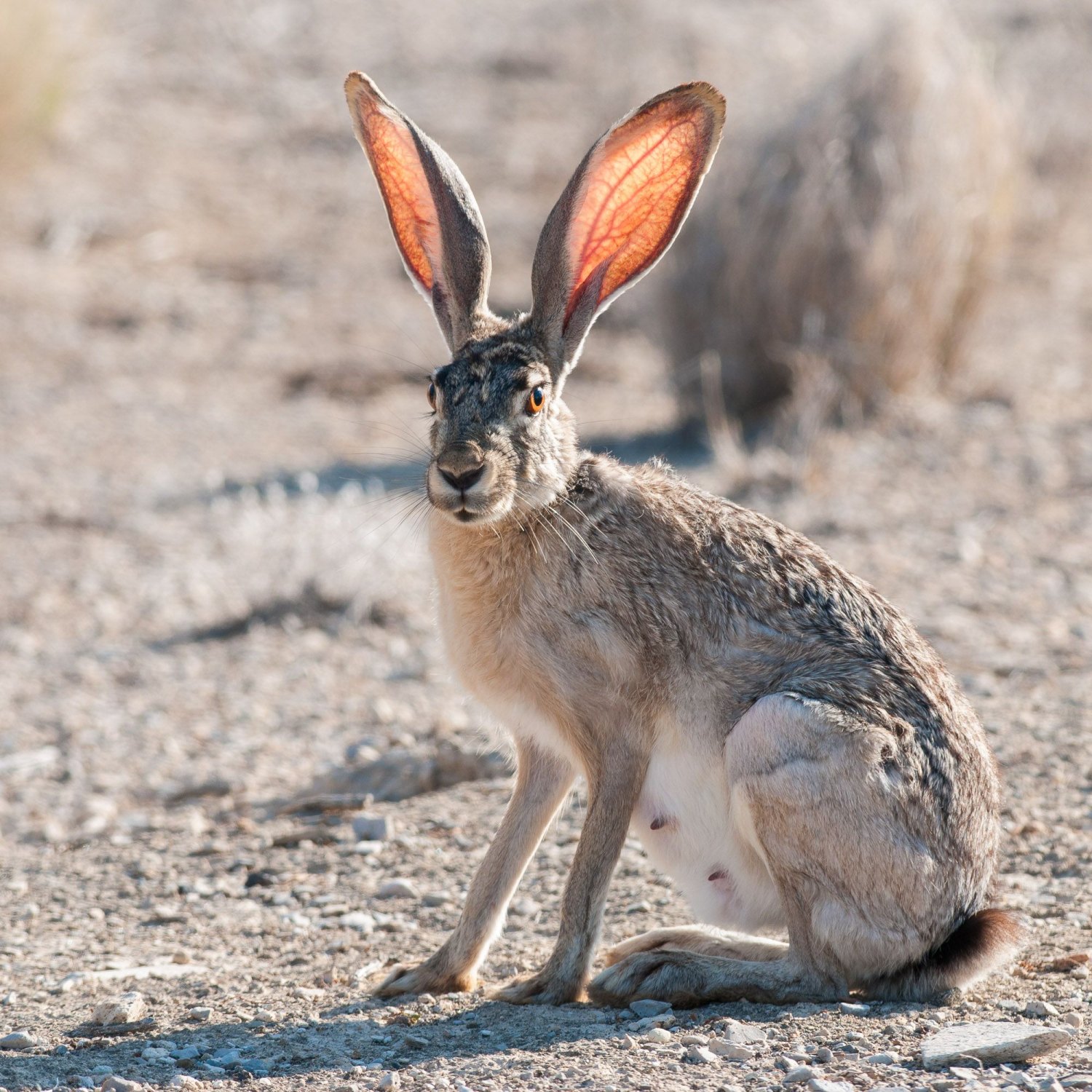
Jackrabbit
20 to 24 inches
Did you know that the Jackrabbit, found in North America, can reach a length of 20-24 inches? Known for their slim, long-legged body shape, these members of the Leporidae family are skilled jumpers and can reach speeds of up to 45 mph. Keep an eye out for these fast and fascinating creatures on your next nature hike. #Jackrabbit #NorthAmerica #wildlife
Animal Details Summary:
Common Name: Jackrabbit
Kingdom: Animalia
Habitat: Deserts, grasslands, and open areas
The Amazing Jackrabbit: Surviving in the Harsh Environments of North and Central America
Lepus californicus, commonly known as Jackrabbit, is a fascinating creature that is endemic to North and Central America. With its slim and long-legged body, this species has adapted to survive in some of the harshest environments on the planet, from deserts to grasslands and open areas. Let's dive into the world of this magnificent mammal and discover the unique features that make it one of the most interesting animals in North America.Taxonomy
The Jackrabbit belongs to the Animalia kingdom, categorized under the Chordata phylum and Mammalia class Jackrabbit. It is a member of the Lagomorpha order and Leporidae family. Its scientific name, Lepus californicus, comes from the combination of the genus Lepus, which means "hare" in Latin, and the adjective californicus, which refers to its native state, California.Habitat and Geographical Distribution
Jackrabbits thrive in various habitats, including deserts, grasslands, and open areas. They are highly adaptable and can survive in extreme temperatures, from scorching hot deserts to freezing cold mountains. Their range covers North and Central America, making them one of the most widespread mammals in the continent. They can also be found in parts of Mexico, particularly in the northern regions.The habitats where Jackrabbits reside are known for their harsh and arid conditions, which may seem uninhabitable for most animals. However, the Jackrabbit has evolved to survive in these environments, making it an extraordinary species to study.
Feeding Method and Diet
Jackrabbits are herbivores, meaning they feed mainly on plants Jewel Beetle. Their diet primarily consists of grasses, herbs, and cacti. They have a unique digestive system that allows them to extract moisture from their food, enabling them to survive in dry and arid regions. However, they also require access to water, and they can consume large amounts in one sitting. Jackrabbits are active at dawn and dusk, feeding at night to avoid the scorching heat of the day.One of the most fascinating behaviors of Jackrabbits is their ability to redirect blood flow to their ears, which helps them regulate their body temperature. This is important as they often have to endure extreme heat in their habitats.
Physical Characteristics
Jackrabbits have a distinct body shape, characterized by their long, slender legs, small tails, and long ears. They have a fur color that ranges from brown to gray, which helps them blend into their surroundings and avoid predators. This coloring also changes throughout the year, with lighter hues in the summer and darker tones in the winter.On average, Jackrabbits measure between 20 to 24 inches in length, making them one of the largest species of rabbits in North America. Despite their slim appearance, they are robust and well-muscled, capable of running at high speeds to evade predators.
Unique Adaptations
Jackrabbits have many unique adaptations that have enabled them to thrive in their harsh environments. Their large ears, for instance, serve multiple purposes. They help regulate body temperature, as mentioned earlier, and also enhance their hearing, allowing them to detect potential predators from a distance. In addition, their ears also work as a signaling mechanism, where they can communicate with each other through a variety of ear positions.Another significant adaptation of Jackrabbits is their speed. These animals can run at speeds of over 45 miles per hour, making them one of the fastest mammals in North America. This skill is essential for escaping predators, such as coyotes, foxes, and birds of prey.
Their fur is another critical adaptation as it helps them blend into their surroundings. They have a unique form of camouflage known as "counter-shading," where their underbelly is lighter than their back, making them less visible to predators when seen from above.
Life in the Desert
Deserts are known for their extreme temperatures, scarcity of water, and lack of vegetation. Surprisingly, Jackrabbits have adapted to thrive in these harsh environments. They have a few tricks up their sleeve that enable them to survive in the desert.One of these tricks is their excellent ability to conserve water. Jackrabbits produce highly concentrated urine, which helps them retain as much moisture as possible. In addition, their large ears, which are thin and well-vascularized, provide surface area for heat loss, helping them regulate body temperature in the scorching heat.
Their diet also plays a vital role in their survival in the desert. Jackrabbits have a special relationship with cacti, which are a key source of food for them. They have evolved to be able to withstand the sharp thorns and spines of cacti while feasting on the nutrient-rich plants.
Role in the Ecosystem
Like all living beings, Jackrabbits also play a significant role in their ecosystem. As herbivores, they help control plant populations, which can have significant effects on the plant community. In addition, their burrowing behavior helps aerate the soil and redistribute nutrients, making the soil more fertile for other plant species.Moreover, Jackrabbits are an essential prey species for many predators, such as coyotes, eagles, and badgers. The presence of Jackrabbits in the ecosystem provides a food source for these predators, contributing to the overall balance of the food chain.
Conservation Status
The International Union for Conservation of Nature (IUCN) has listed Jackrabbits as a species of "least concern" on their Red List of Threatened Species. This means that their population is stable and not currently at risk of becoming endangered. However, there are still some threats that this species faces, such as habitat loss due to human activities, predators, and disease outbreaks. It is essential to continue monitoring their population and conservation efforts to ensure their numbers remain stable in the wild.Human-Jackrabbit Interaction
Jackrabbits have had a long history of interaction with humans. In some cultures, they are considered a symbol of fertility and abundance, while in others, they are seen as a pest due to their diet of crops and vegetation. Historically, Jackrabbits have also been hunted for their fur and as a source of food.Today, Jackrabbits are primarily encountered in their natural habitats, and many people enjoy watching them in the wild. Ecotourism has also become popular in regions where Jackrabbits reside, allowing people to see these animals in their natural environment while contributing to conservation efforts.
In Conclusion
Lepus californicus, or the Jackrabbit, is undoubtedly one of the most fascinating animals in North America. Its ability to survive in harsh environments, such as deserts, grasslands, and open areas, is a testament to its remarkable adaptations. From its long ears, ability to run at high speeds, to its unique digestive system, Jackrabbits have evolved to become one of the most remarkable species in the animal kingdom.As humans continue to explore and learn more about this amazing mammal, it is crucial to ensure its conservation. Through sustainable efforts, we can ensure that Jackrabbits continue to thrive in their natural habitats and contribute to the delicate balance of our ecosystem. So, if you ever come across a Jackrabbit in the wild, take a moment to appreciate this magnificent creature and its ability to survive in some of the toughest environments on the planet.

Jackrabbit
Animal Details Jackrabbit - Scientific Name: Lepus californicus
- Category: Animals J
- Scientific Name: Lepus californicus
- Common Name: Jackrabbit
- Kingdom: Animalia
- Phylum: Chordata
- Class: Mammalia
- Order: Lagomorpha
- Family: Leporidae
- Habitat: Deserts, grasslands, and open areas
- Feeding Method: Herbivorous
- Geographical Distribution: North and Central America
- Country of Origin: United States and Mexico
- Location: North America
- Animal Coloration: Brown or gray
- Body Shape: Slim and long-legged
- Length: 20 to 24 inches
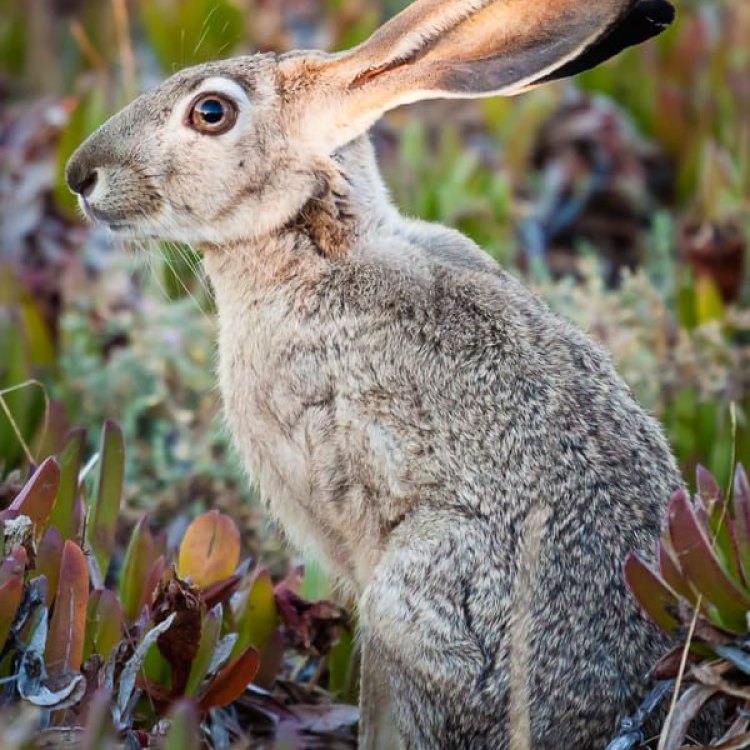
Jackrabbit
- Adult Size: 20 to 24 inches
- Average Lifespan: 1 to 5 years
- Reproduction: Sexual
- Reproductive Behavior: Breeding occurs throughout the year
- Sound or Call: Loud screaming sound
- Migration Pattern: Nomadic and migratory
- Social Groups: Solitary
- Behavior: Mainly active at night
- Threats: Predation, habitat loss, and hunting
- Conservation Status: Least Concern
- Impact on Ecosystem: Important prey species
- Human Use: Hunting and fur trade
- Distinctive Features: Long ears and powerful hind legs
- Interesting Facts: Jackrabbits can run up to 40 miles per hour
- Predator: Coyotes, bobcats, and birds of prey
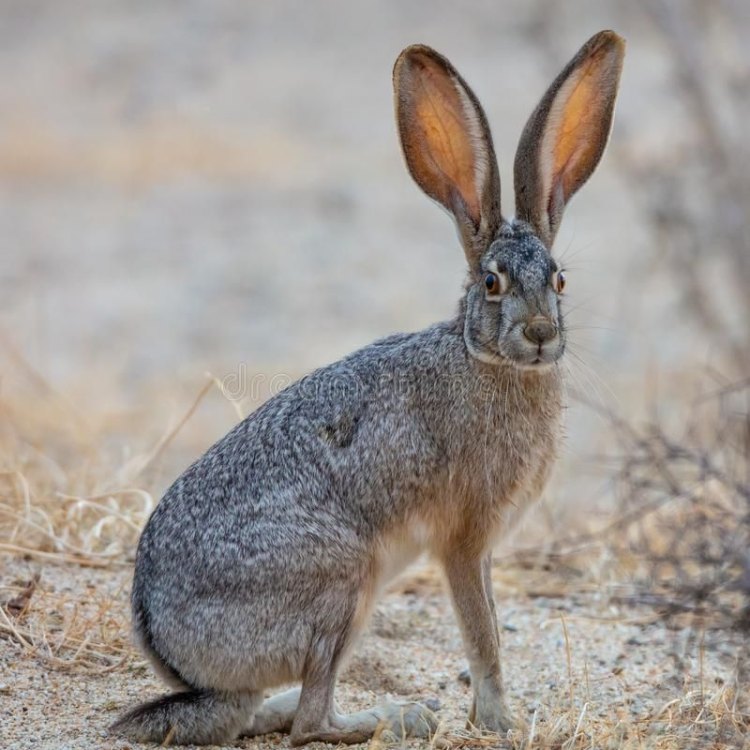
Lepus californicus
The Fascinating Jackrabbit: A Unique Species with Powerful Adaptations
The American Southwest is home to a fearless creature that roams the grasslands and desert regions with unmatched agility and speed. With its long ears and powerful hind legs, the jackrabbit stands out as one of the most distinctive and fascinating animals in that region. While often mistaken for a domestic rabbit, the jackrabbit is actually a hare and possesses unique characteristics that make it stand out in the animal kingdom. In this article, we will delve into the world of the jackrabbit and explore its physical attributes, behavior, and impact on the ecosystem PeaceOfAnimals.Com.Morphology and Size
The jackrabbit, scientifically known as Lepus californicus, is a species of hare that can be found in the southwestern United States and Mexico. It belongs to the Leporidae family, which also includes rabbits and pikas. On average, jackrabbits measure between 20 to 24 inches in size, making them the largest hare species in North America. They have a slender, muscular body with long, powerful hind legs, which they use to reach speeds of up to 40 miles per hour – a testament to their impressive physical capabilities.The most distinctive feature of the jackrabbit is its long ears, measuring up to 6 inches in length. These ears serve many purposes, such as keeping the animal cool in hot weather, helping them locate predators, and enhancing their hearing ability. This unique feature has earned them the nickname “jackass rabbit” because of their donkey-like ears. Additionally, jackrabbits have large black eyes that provide 360-degree vision, allowing them to keep an eye out for predators in all directions.
Lifespan and Reproduction
Jackrabbits have a relatively short lifespan, with an average of 1 to 5 years in the wild Jack Crevalle. The short lifespan is due to various factors, including predation, habitat loss, and hunting by humans. They reach sexual maturity within the first year of life and are considered sexually dimorphic, meaning males and females have distinct physical differences. In the breeding season, which occurs throughout the year, males engage in fierce chasing and fighting to gain the attention of females. Once a male has successfully mated with a female, the gestation period lasts about 41 days, with litters ranging from 3 to 6 offspring, known as leverets.Behavior and Social Habits
Unlike rabbits, which live in large groups called colonies, jackrabbits are solitary animals and only come together to mate. They are mainly active at night, which is known as being nocturnal. During the day, they take cover in their burrows or under shrubbery to avoid excessive heat and predators. These burrows, which can reach up to 10 feet deep, provide shelter and protection for the jackrabbit during the day. While they are known for being solitary, they may gather in small groups to feed on grass and other vegetation.The jackrabbit’s breeding behaviors are also unique. While most hare species follow a seasonal breeding pattern, jackrabbits can breed all year round. This adaptation is useful for ensuring the survival of the species in unpredictable or harsh environmental conditions.
Migration Patterns
One of the most fascinating behaviors of the jackrabbit is its nomadic and migratory nature. They are capable of traveling long distances in search of food and suitable habitats. This behavior is necessary as they mainly feed on grass and other vegetation, which may become scarce in their current area due to drought or other environmental factors. Although they are predominantly found in the southwestern United States and Mexico, they can be seen as far north as Canada and as far south as Belize and Guatemala.Predators and Threats
As with any other species, jackrabbits face a variety of threats in their natural habitat. Predators, including coyotes, bobcats, and birds of prey, pose a significant danger to jackrabbits. Due to their natural ability to reach high speeds, jackrabbits can escape predators by running in a zig-zag pattern, making it more challenging for predators to catch them. However, habitat loss and hunting by humans also contribute to their declining population. Jackrabbits' skin is highly sought after for the fur trade, and they are often hunted by humans for their meat.Conservation Status and Impact on Ecosystem
According to the International Union for Conservation of Nature (IUCN), the jackrabbit is listed as a species of “least concern.” This means that, while they are not currently endangered, their population size and habitats should be monitored and managed to prevent future decline. As mentioned earlier, they play a crucial role in their ecosystem as a prey species for predators. Their abundance in the wild ensures a balanced food chain, making them an essential part of the American Southwest’s biodiversity.In addition to being an important prey species, jackrabbits also have a significant impact on their ecosystem through their unique feeding behaviors. Their diet mainly consists of grass and other vegetation, and in doing so, they help control plant growth and prevent overgrazing in the areas they inhabit. By altering the vegetation in their habitats, jackrabbits also contribute to soil preservation and water conservation, which are essential for maintaining a healthy ecosystem.
Human Use and Interesting Facts
Humans have long been fascinated with the jackrabbit and its adaptability in harsh environments. While hunting and fur trade have caused a decline in their population, they are still hunted for their meat in some regions. Interestingly, their skin has been used to make drumheads, and their fur has been used for making clothing and blankets by the Native American tribes.Finally, if you’re still not impressed by the jackrabbit, here’s a fun fact – they can run up to 40 miles per hour! This incredible speed is essential for their survival in the wild, as it allows them to evade predators and escape danger quickly.
The Jackrabbit – A Unique and Important Species
In conclusion, the jackrabbit has many unique features and behaviors that make it stand out as one of the most intriguing animals in the American Southwest. From its long ears and powerful hind legs to its nomadic nature and strong survival instincts, the jackrabbit is an adaptation marvel. Despite facing various threats, they continue to thrive in their environment and play a crucial role in maintaining a healthy ecosystem. Let us continue to appreciate and protect this remarkable species for generations to come.
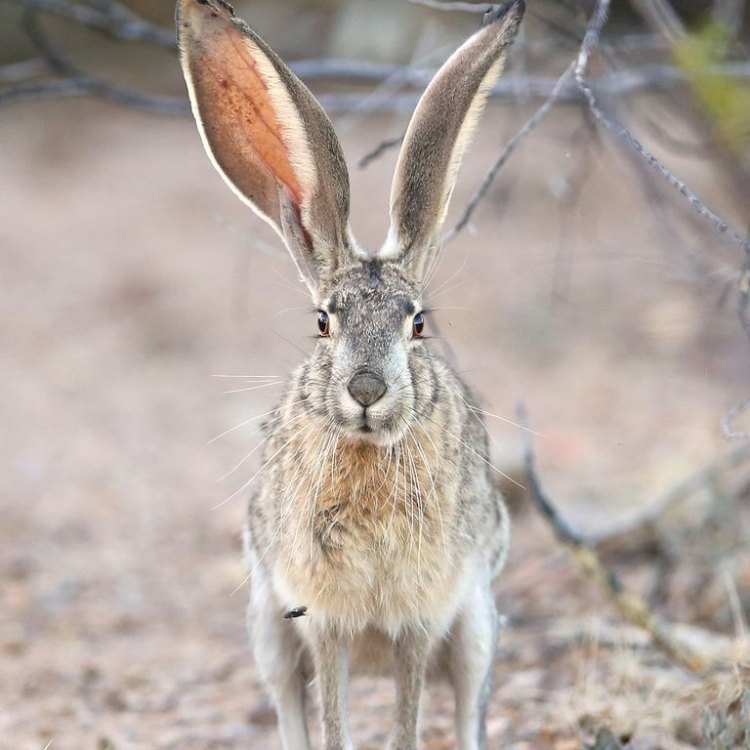
The Amazing Jackrabbit: Surviving in the Harsh Environments of North and Central America
Disclaimer: The content provided is for informational purposes only. We cannot guarantee the accuracy of the information on this page 100%. All information provided here may change without prior notice.





